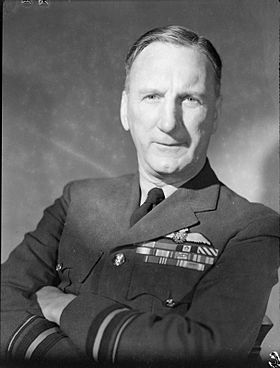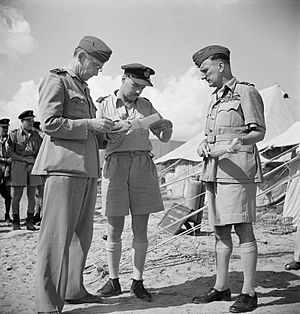Leonard Slatter facts for kids
Quick facts for kids
Sir Leonard Horatio Slatter
|
|
|---|---|

Air Vice Marshal Sir Leonard Slatter c.1943
|
|
| Born | 8 December 1894 Durban, South Africa |
| Died | 14 April 1961 (aged 66) Uxbridge, England |
| Allegiance | United Kingdom |
| Service/ |
Royal Navy (1914–18) Royal Air Force (1918–49) |
| Years of service | 1914–49 |
| Rank | Air Marshal |
| Commands held | Coastal Command (1945–48) No. 15 Group (1943–45) No. 9 (Fighter) Group (1942) No. 201 (Naval Co-operation) Group (1941–42) No. 203 Group (1940–41) RAF Bassingbourn (1939) RAF Feltwell (1937–39) RAF Tangmere (1935–37) No. 43 Squadron (1930–31) RAF Hornchurch (1929–30) No. 111 Squadron (1929–30) No. 19 Squadron (1929) High Speed Flight (1926–28) RAF Base Malta (1924–26) No. 230 Squadron (1922–23) No. 203 Squadron (1921) |
| Battles/wars | First World War Second World War |
| Awards | Knight Commander of the Order of the British Empire Companion of the Order of the Bath Distinguished Service Cross & Bar Distinguished Flying Cross Mentioned in Despatches Order of Saint Stanislaus, 2nd Class (Russia) Grand Commander of the Royal Order of George I (Greece) |

Sir Leonard Horatio Slatter (born 1894, died 1961) was a brave pilot. He flew planes for the navy in the First World War. Later, he became a top commander in the Royal Air Force during the Second World War. He finished his career leading the Coastal Command.
Contents
Early Life and World War I Heroics
Leonard Slatter was born in Durban, South Africa, in 1894. He went to college in South Africa and then studied engineering in England.
When World War I began, he joined the Royal Navy. He first rode motorcycles for the Naval Armoured Car Division. In 1915, he joined the Royal Naval Air Service to fly planes.
After training, Slatter became an observer in February 1916. He was sent to a seaplane squadron in Dunkirk, France. In July 1916, he began training to become a pilot himself. He started flying duties later that year from Dover, England.
In February 1917, Slatter joined the Seaplane Defence Flight. This unit later became No. 213 Squadron RAF. He flew from Dunkirk and showed great skill. During this time, he shot down six enemy aircraft. He was awarded the Distinguished Service Cross twice for his bravery. He was also promoted from pilot to flight commander.
In July 1918, Slatter was moved from front-line fighting. He became an instructor at an aeroplane supply depot. Even as an instructor, he still flew missions. On August 30, 1918, he shot down his seventh and final enemy plane.
Between the World Wars
After World War I ended, Slatter decided to stay in the military. He joined the new Royal Air Force. In 1919, he flew planes like the DH9 and DH9A in southern Russia. He was given a permanent role in the RAF and became a flight lieutenant.
Leading Squadrons
Back in Great Britain, Slatter became a flight commander at No. 205 Squadron. In 1921, he moved to No. 203 Squadron. He later became the commander of this squadron while it was in Turkey.
In 1922, Slatter transferred to No. 230 Squadron. He served as both a flight commander and the officer in charge. In 1924, he was promoted to squadron leader. He then commanded the RAF base in Malta for over two years.
High Speed Flight and Station Commander
In 1926, Slatter was put in charge of the RAF High Speed Flight. This team prepared for the 1927 Schneider Trophy race in Venice. He then commanded No. 19 Squadron and No. 111 Squadron. He also became the Station Commander at RAF Hornchurch.
Later, he led No. 43 Squadron at RAF Tangmere. From 1932, he was responsible for flying on the aircraft carrier HMS Courageous. He returned to be Station Commander at RAF Tangmere. Before World War II, he also commanded RAF Feltwell and RAF Bassingbourn.
Second World War Leadership
When the Second World War began, Slatter was a senior officer at No. 1 Group. In 1940, he moved to Iraq to help manage British forces there.
Commanding Different Groups
He then became the Air Officer Commanding for several groups. These included No. 203 Group, No. 201 Group, and No. 9 Group.
In February 1943, he was appointed Air Officer Commanding No. 15 Group. His important job here was to make sure vital supplies reached the UK safely from the US.
Leading Coastal Command
In June 1945, Slatter became the Air Officer Commanding-in-Chief of RAF Coastal Command. This was a very high position. He retired from the Royal Air Force in 1949.

